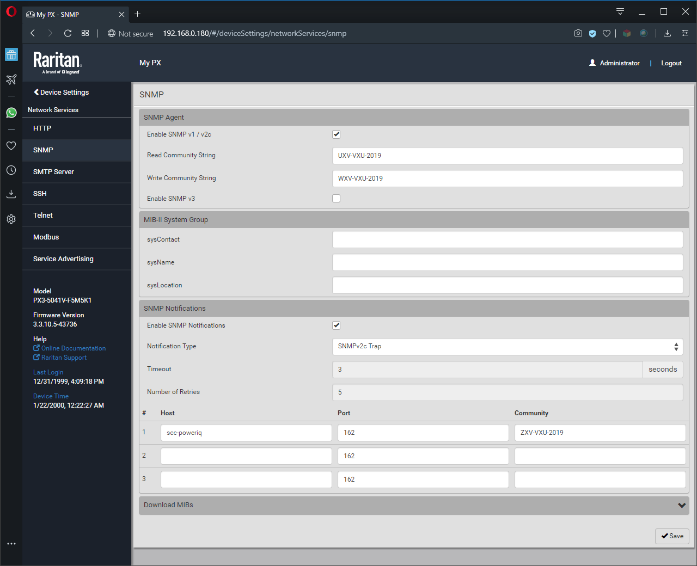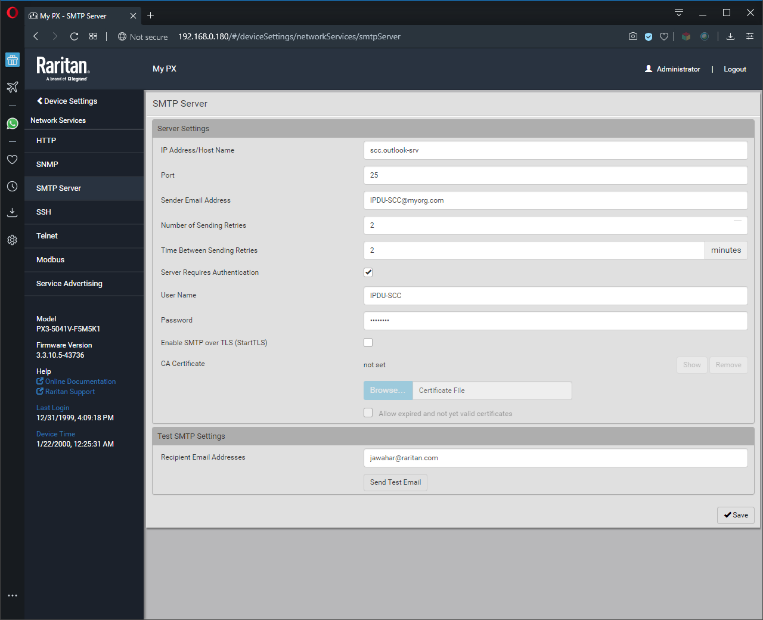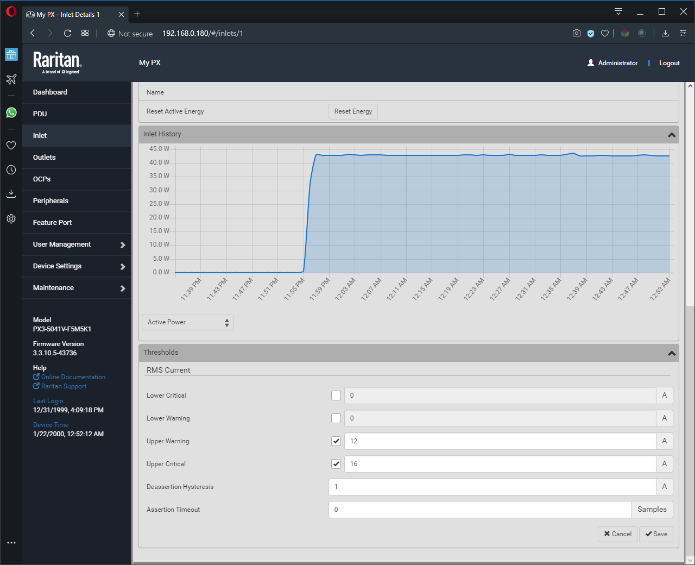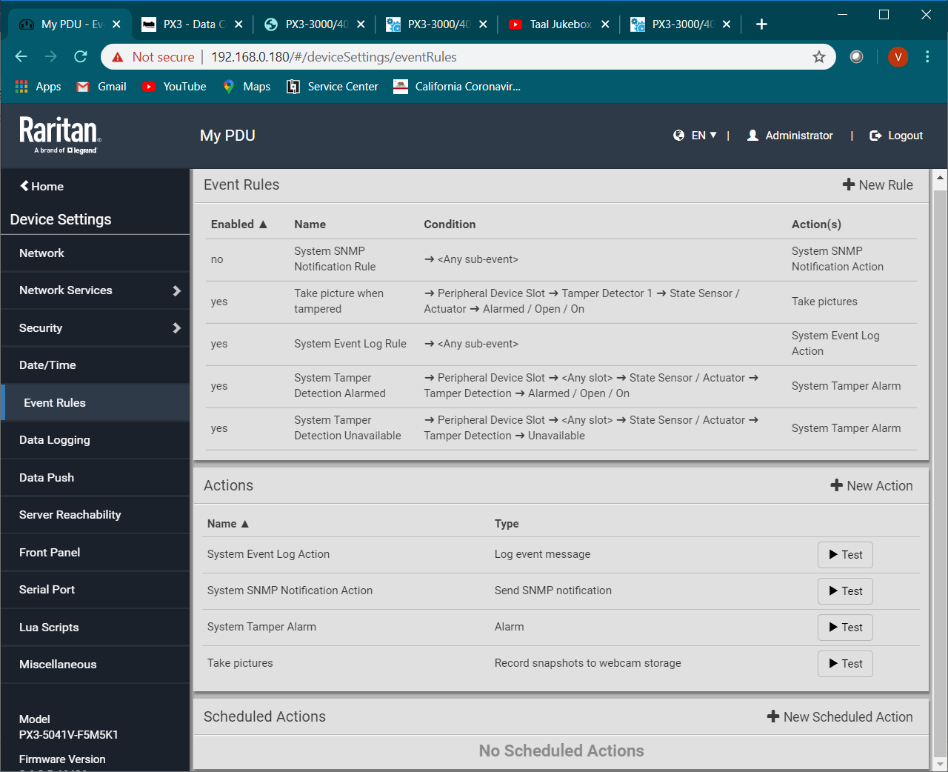The Raritan Blog
Home » Raritan Blog » Power Tip #1: Ensure That You Are Receiving Alerts on Critical Events:
Power Tip #1: Ensure That You Are Receiving Alerts on Critical Events:
Jessica Ciesla
July 15, 2020

Raritan's PX3 PDUs monitor a variety of electrical and environmental parameters. You can receive alerts on anything that gets monitored – inlet data, outlet data, circuit breaker status, unbalanced loads, and power factor, to name a few. To configure and receive alerts successfully, you need to ensure the following actions have been completed:
1. Configure Alert Delivery Mechanism – how to set up and receive your alerts: SNMP and/or SMTP.
a. If you prefer your alerts to be sent to an SNMP manager tool, you need to enable: Device Settings > SNMP > Enable SNMP Notifications
It is important to note that this setting is different from the SNMP Agent setting. You won't be receiving SNMP alerts even if you have enabled SNMP v1/ v2c if you don't explicitly enable SNMP Notifications.
Example of SNMP Configuration Illustrated Below.

b. If you prefer your alerts delivered as emails, you need to enable: Device Settings > SMTP Server
The best practice is to create a separate service account for all PDUs to use as 'Sender Email Address' to clearly identify alerts from PDUs. Service accounts are recommended in most organizations for audit trail purposes as well.
Example of SMTP Server Configuration Illustrated Below.

2. Configure Thresholds to trigger events - It is important to note that only a handful of thresholds are enabled by default, so if additional thresholds parameters are needed, you must ensure they are checked off. Depending on the PX3 series, you can set thresholds for inlet/ line, branch circuit, or outlet parameters like current, voltage, power, and energy. The following example explains how to set the thresholds for inlet current of a 16A PDU:
• Inlet > Thresholds
• Select RMS Current
• Upper Warning – make sure it is enabled and enter 12A, for example, if you'd like to receive a warning alert when the inlet current exceeds 8A so you can take the necessary precautionary actions to avoid overloading the PDU.
• Upper Critical - make sure it is enabled and enter 14A, for example, if you'd like to receive a second alert when the inlet current exceeds 14A so you can act immediately and proactively avert tripping the upstream breaker.
Example of Active Energy Chart Illustrated Below.

3.Setup Event Rules – This is the final step to tie an event to an alert. An event rule consists of two parts:
Event: This is the situation where the PX3 or a device connected to it meets a specific condition. For example, the inlet's voltage reaches the warning level.
Action: This is the response to the event. For example, the PX3 notifies the system administrator of the event via email.
Example of Event Rules Configuration Illustrated Below.

To learn more about how to ensure that you are receiving alerts on critical events watch our previously recorded webinar, here.
Other Blog Posts
- Who Should Care About ISO 27001?
- Posted on April 30, 2024
- The Rapid Growth of AI and the Use of Raritan PDUs to Meet Higher Power Demands
- Posted on October 11, 2023
- Data Center Report Fewer Outages, But Downtime Still Costly
- Posted on September 20, 2023
- Survey: Energy Usage and Staffing Shortages Challenge Data Centers
- Posted on September 20, 2023
- Raritan Secure Switch: Secure NIAP 4.0 Compliant Desktop KVM
- Posted on September 20, 2023
Subscribe
Upcoming Events
- Advancing Data Center Construction West 2024
- May 6 – 8 • Salt Lake City, UT
- Net Zero Data Center
- May 16 – 17 • Dallas, TX
- 7x24 Exchange Spring
- June 9th • JW Marriott Orlando Grande Lakes
Latest Raritan News
- Legrand Certifications and Process Controls Provide Confidence in Information Security for Network-Connected Devices in Data-Related Applications
- Posted on April 1, 2024
- Legrand Releases Version 4.0 of Raritan’s Industry-Leading Secure KVM Switches, Raising Bar for Secure Desktop Access
- Posted on July 31, 2023
- Legrand Revitalizes Data Center Sector with Two Revolutionary Intelligent Rack PDUs
- Posted on May 1, 2023
- Raritan Reveals The MasterConsole® Digital Dual KVM Switch
- Posted on February 18, 2021
- Legrand Data, Power and Control Division Announced as Finalist in Six Categories at DCS Awards 2020
- Posted on November 9, 2020